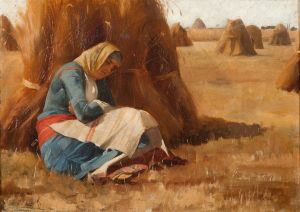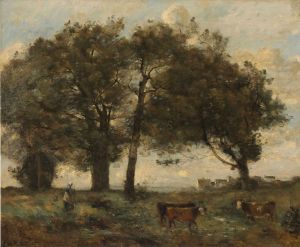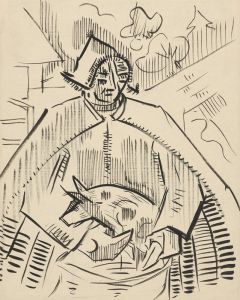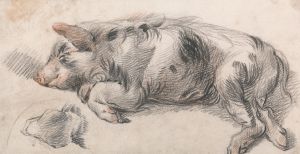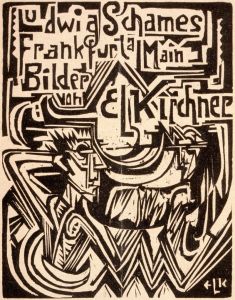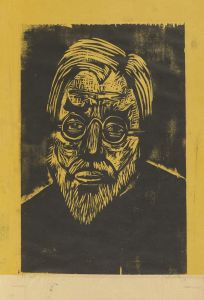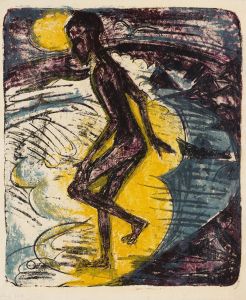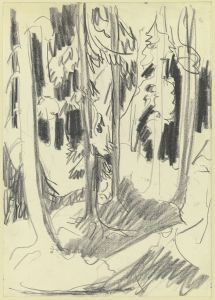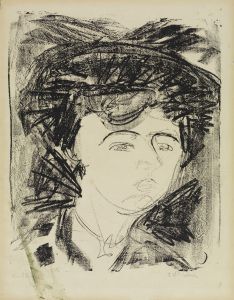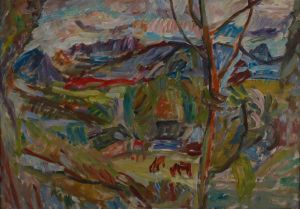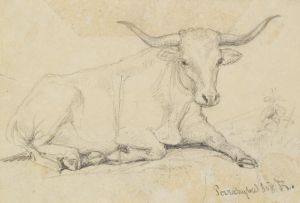
Kühe Im Frühling
A hand-painted replica of Ernst Ludwig Kirchner’s masterpiece Kühe Im Frühling, meticulously crafted by professional artists to capture the true essence of the original. Each piece is created with museum-quality canvas and rare mineral pigments, carefully painted by experienced artists with delicate brushstrokes and rich, layered colors to perfectly recreate the texture of the original artwork. Unlike machine-printed reproductions, this hand-painted version brings the painting to life, infused with the artist’s emotions and skill in every stroke. Whether for personal collection or home decoration, it instantly elevates the artistic atmosphere of any space.
Ernst Ludwig Kirchner was a prominent German expressionist painter and one of the founding members of the influential art group Die Brücke (The Bridge), which played a crucial role in the development of modern art in the early 20th century. Kirchner's work is characterized by its bold use of color, dynamic compositions, and a focus on the human figure and natural landscapes. One of his notable works is "Kühe Im Frühling" (Cows in Spring), which reflects his distinctive style and thematic interests.
"Kühe Im Frühling" is a vibrant depiction of cows set against a spring landscape, showcasing Kirchner's fascination with rural life and nature. The painting is executed with expressive brushstrokes and vivid colors, typical of Kirchner's approach to capturing the essence of his subjects rather than their realistic details. This work exemplifies his ability to convey emotion and movement through color and form, a hallmark of the expressionist movement.
Kirchner's choice of subject matter in "Kühe Im Frühling" aligns with his broader artistic interests during his career. He often drew inspiration from the natural world, seeking to capture the vitality and dynamism of life. The depiction of cows in a pastoral setting may also reflect his desire to escape the industrialization and urbanization of the early 20th century, a theme that resonates in many of his works.
The painting is also indicative of Kirchner's exploration of color theory and his interest in the psychological effects of color. The use of bold, contrasting colors in "Kühe Im Frühling" not only enhances the visual impact of the work but also evokes a sense of energy and renewal associated with springtime. This approach to color is a defining feature of Kirchner's oeuvre and contributes to the emotional intensity of his paintings.
Kirchner's work, including "Kühe Im Frühling," was influenced by various artistic movements and cultural contexts. As a member of Die Brücke, he was part of a group that sought to bridge traditional and modern art forms, drawing inspiration from sources such as African and Oceanic art, as well as the works of Vincent van Gogh and Edvard Munch. This eclectic mix of influences is evident in the stylistic elements of "Kühe Im Frühling," where the simplification of forms and expressive use of color reflect both a break from academic traditions and an embrace of new artistic possibilities.
Throughout his career, Kirchner faced numerous challenges, including the impact of World War I and the rise of the Nazi regime, which labeled his work as "degenerate art." Despite these obstacles, he continued to produce art that pushed the boundaries of expressionism and left a lasting impact on the art world. "Kühe Im Frühling" stands as a testament to his enduring legacy and his ability to capture the spirit of his time through innovative artistic expression.
Today, Kirchner's works are celebrated for their contribution to the development of modern art, and "Kühe Im Frühling" remains an important piece within his body of work. It is appreciated not only for its aesthetic qualities but also for its reflection of the broader cultural and historical contexts in which Kirchner created his art.





